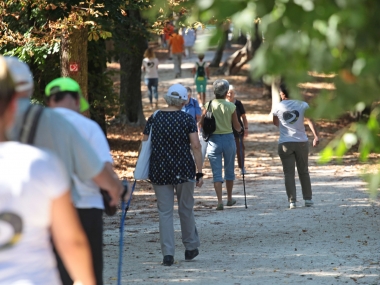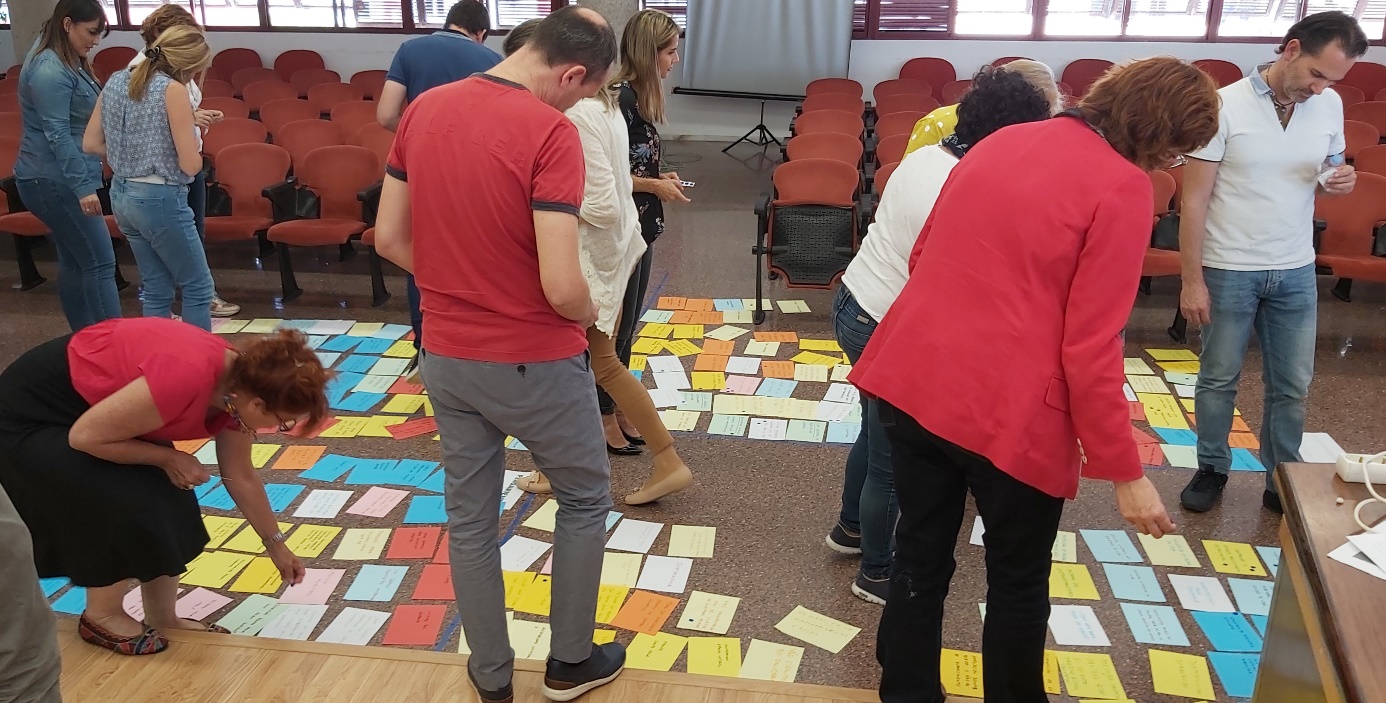Access to nature in cities improves health and boosts well-being
Edited on
17 February 2020Are we fully aware of the relevance of urban green spaces? We are hardwired in a way that our body and mind functions far better in natural environment. A growing body of empirical evidence indicates that exposure to urban green spaces has positive impacts on both our physical and mental health. But as cities expand and densify, our precious green spaces and urban vegetation are increasingly coming under threat.

Well planned and properly managed urban green spaces can contribute to healthy urban living, climate change adaptation and improved urban air quality. Yet despite their significant potential, the use of urban green spaces remains marginal, fragmented, and highly uneven within cities.
The URBACT Health&Greenspace Network was developed in response to the various health risks related to rapid urbanization and the densification of cities. The project launched in September 2019 promotes health-responsive planning and management of urban green spaces with an overall aim to bring health and well-being benefits for citizens across Europe. Zsófia Hamza, the Project Coordinator of Health&Greenspace, when touching upon the motivation of Budapest 12th District to initiate the project, highlighted that “For many years, the municipality has been working hard to protect green areas and improve health. The interconnection of these two fields, the interconnection of hitherto separate efforts can create a different quality and can dramatically multiply the achievements of the two sectors.”
Budapest 12th District leading the URBACT Action Planning Network will be teaming up with 8 other city partners – Breda (NL), Espoo (FI), Limerick (IE), Messina (IT), Poznan (PL), Santa Pola (ES), Suceava (RO), Tartu (EE). On the Kick-off Meeting, taking place in Espoo on 24-26 September, city representatives started to define the sub-themes of the project, and identified potential actions, learning needs and good practices.

Health and well-being benefits of urban green spaces
An analysis(link is external) undertaken by researchers from the University of East Anglia that combined the results of multiple scientific studies, finds that increased greenspace exposure is associated with reduced blood pressure, better pulmonary and immune function, reduced risk of stroke, cardiovascular disease, and asthma.
Access to natural environments can also improve overall mental health. The impact of green spaces to mental health include reduces stress levels, improved general mood, reduced depressive symptoms, better cognitive functioning, improved mindfulness and creativity.
According to a study(link is external) published in 2016, parks have notable cooling effects in the vegetated areas and also in the surrounding built environment. The oasis effect of parks will become ever more relevant for urban residents as climate change related heat waves presents a range of health risks, including potentially fatal heat stroke.
Vegetation has an important role also in improving urban air quality by removing pollutants through filtration, decomposition and assimilation.
Green urban areas also facilitate physical activity and relaxation and form a refuge from noise. Furthermore, parks and green spaces are places to connect with other people in the community and improve social well-being.
A range of actions in the spotlight
Local authorities can significantly influence how people use green spaces, as well as how to improve their potential to deliver health benefits. Actions covered by the network will be linked to both physical changes to the urban environment and the promotion of social activities, such as community participation in the design, establishment and maintenance of urban green spaces, and facilitated activities in parks. Health&Greenspace does not focus solely on parks, but also on street green and external building greens, such as green roofs and green façade walls.
Health&Greenspace will support actions linked to green space related interventions that directly improve the physical and mental health of urban citizens. Action to be addressed can include the development of therapeutic gardens, health-walk routes, and areas for relaxation. Actions can be linked both to preventative care and postsurgical medical treatment.
Health&Greenspace supports climate-responsive design of green spaces to increase the cooling capacity of urban areas. Urban authorities have a range of options to build on the cooling effects of vegetation:

- the accessibility of public parks can be increased to provide shelter during heat waves,
- the gardens of public parks can be opened for neighbouring residents,
- cooling routes and cooling oases can be developed in the cityscape,
- cold air corridors can be kept open in green spaces to improve ventilation.
The use of urban green spaces to improve air quality and mitigate noise from traffic is also one of the goals of the project. Vegetation barriers between road and pedestrians, specific green space design to provide ventilation to the city, vegetation structures functioning as sound barriers, and creation of quiet natural soundscapes in the urban fabric can be particularly effective in this regard.
Health&Greenspace is as much about social health and social cohesion as it is about physical and mental health benefits of green spaces. Designing green areas that function as outdoor community centres, organization of family days in parks, the development of recreational spaces can all serve to attract people to spend time in urban green areas and to strengthen social interactions.
Partners of the network represent a diversity of local contexts, entry points, and also struggle with diverse challenges. The starting position differs across cities. The 12th District of Budapest is struggling with the maintenance of large areas of green space. Espoo has a very high share of green areas but because of rapid urbanization the green network is narrowing down. Poznan has a unique ‘wedge-and-ring’ greenery system that needs to be maintained and upgraded. In Limerick the network of green spaces is relatively small and fragmented. In Messina and Santa Pola the urban areas are densely built-up. Tartu is preparing a new master plan for the development of urban green infrastructure that focuses on cooling solutions, the reduction of noise and air pollutant. Breda and Suceava are aiming for large-scale rehabilitation of green spaces.
Urban green spaces are becoming increasingly valuable, as artificial urban environment is rapidly expanding, and more and more people are forced to live in cities. The Health&Greenspace partnership will demonstrate to cities across Europe how the urban fabric can be transformed into a healthier environment for the benefit of its residents. Follow @Health&Greenspace(link is external) and explore the details of the activities undertaken in the 9 partner cities!
 Submitted by Tamas Kallay on
Submitted by Tamas Kallay on
